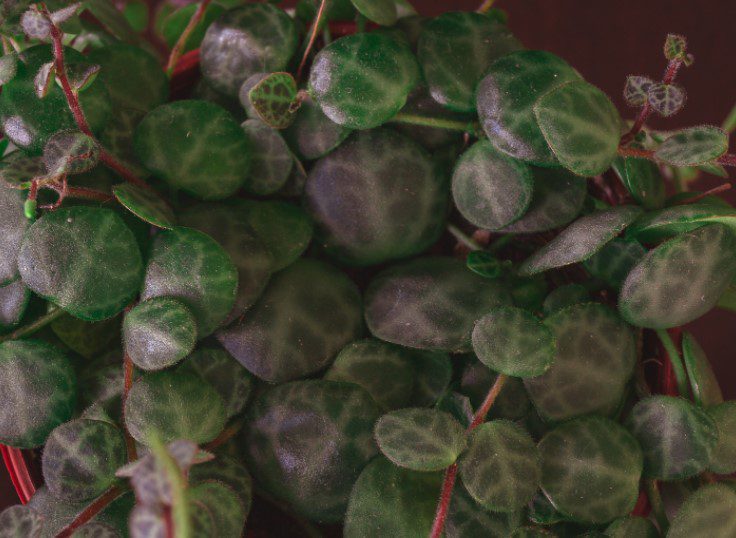String of Turtles
A string of Turtles (Peperomia prostata) is a little Brazilian native succulent that can thrive in an environment similar to that of a typical house. It is featured in many apartment jungles and houseplant collections around the world.
It is small in stature and grows slowly, reaching maturity in three to five years. The string of turtles is an excellent choice for those with limited space.
Its attractive leaves make it an ideal plant for fairy gardens, container gardens, or terrariums.
The common name of the plant is due to its similar leaf shape. Each leaf looks almost like a tiny turtle shell strung together.
Each little leaf has multi-colored patterns all over its surface. As the plant ages, its colors fade and become more muted.
Eventually, it will turn a darker shade of green with lighter green underneath. This succulent still retains its charm.
It doesn’t matter what it is used for; Peperomia spp. will make an outstanding conversation piece and valuable addition to any indoor garden.
The string of Turtles Care
A string of turtles can be the pride and joy of a tropical plant collection if properly cared for. However, it will require some effort and adaptation to the usual methods of maintaining succulents.
But, being different does not necessarily mean difficult. Peperomia prostrata that is well cared for will produce a unique and delicious vining succulent.
Light
A string of turtles plants thrives in bright indirect sunlight. These plants should not be held in direct sunlight for too long as this can cause damage to the leaves.
Soil
A premix specifically formulated for succulents or cacti may be familiar to those experienced in growing them. These premixes are not recommended for Peperomia prostrata.
A mix mainly made up of organics is better. A mix that is rich in peat is best. This recipe is easy to find in commercial seed starting mixes. It may be a smart idea to test the soil now and again.
Water
Once the soil is peaty, the turtle string will prosper and retain the necessary moisture to survive.
Overwatering causes more damage to the plant than dry.
Conditions
Because it is a native of the Brazilian rainforest, it likes to live in slightly moist conditions.
It can do this by keeping the soil moist during the growing season and using the succulent “soak and dried” method during winter.
Avoid overwatering by thoroughly moistening the soil and drenching it with water until the soil runs dry. After the soil has dried to the top, the plant should not be watered. This method will ensure that the plant is properly watered even during the winter months.
Humidity and Temperature
Peperomia prostrata prefers cool, humid temperatures to the warm temperatures succulent fans are used to.
Keep the turtle string at an average room temperature (around 68o-75o F).
You may use a humidifier or mister during dry summer months or when the heater is on in the winter. However, it is vital to make sure that the leaves do not get too wet.
Fertilizer
A string of turtles can be fed to help keep the plants’ vigor bright and shiny. It will also ensure that the leaves remain the same color throughout the growing season.
You can feed it biweekly with a diluted fertilizer for houseplants during the growing season. It is not recommended to fertilize during winter or fall.
Is String of Turtles Toxic?
The String of Turtles can be toxic to pets if ingested.
Pruning
A string of turtles can look unkempt and ragged if they are not regularly pruned. You can occasionally prune to remove unwanted growth and take out dead or damaged stems.
This encourages the growth of new, stronger plants. Use sanitized or sharp scissors for all pruning.























